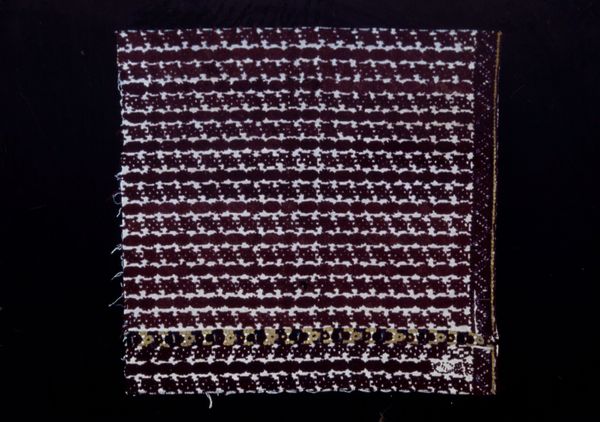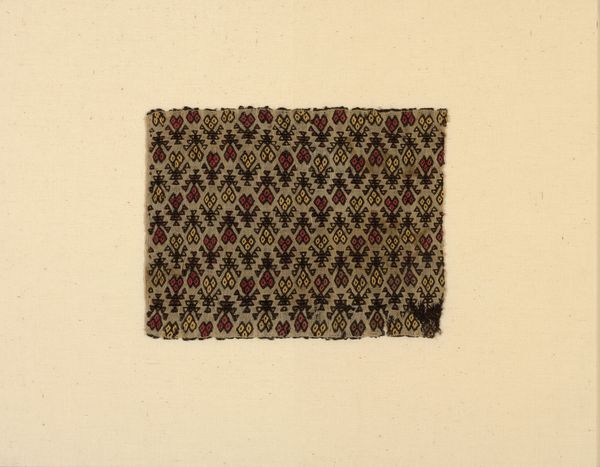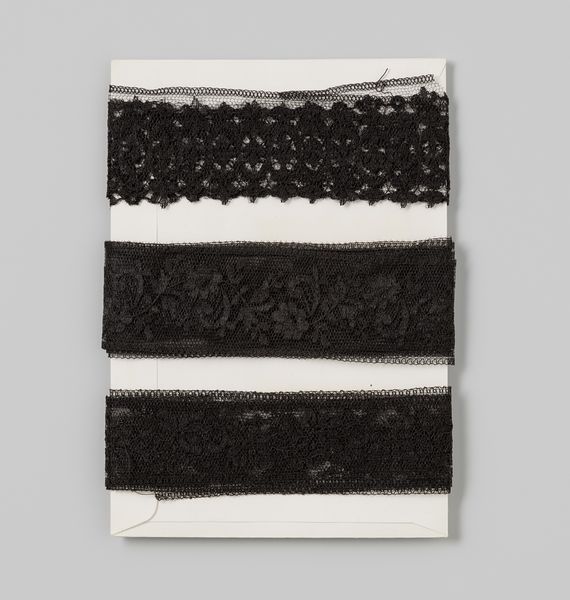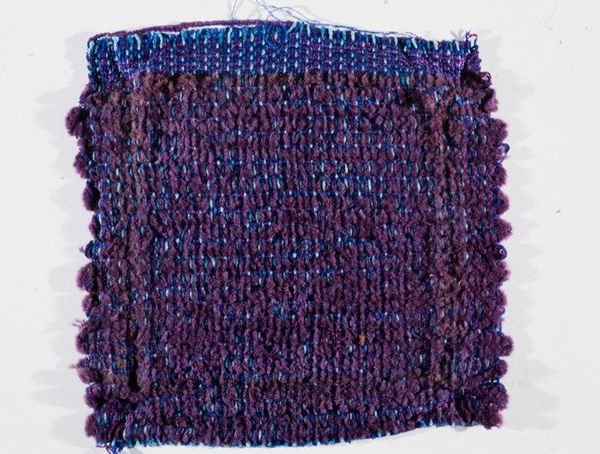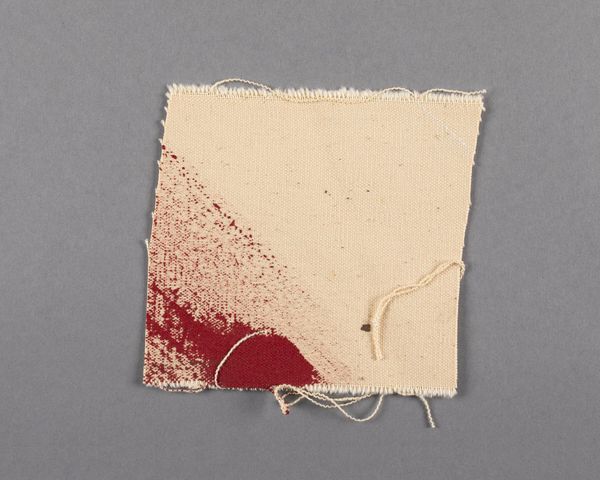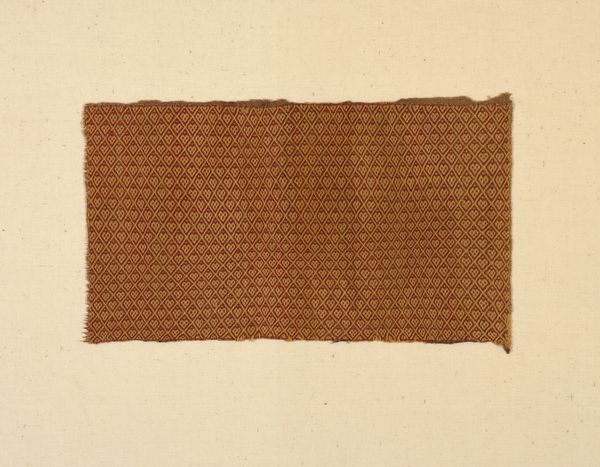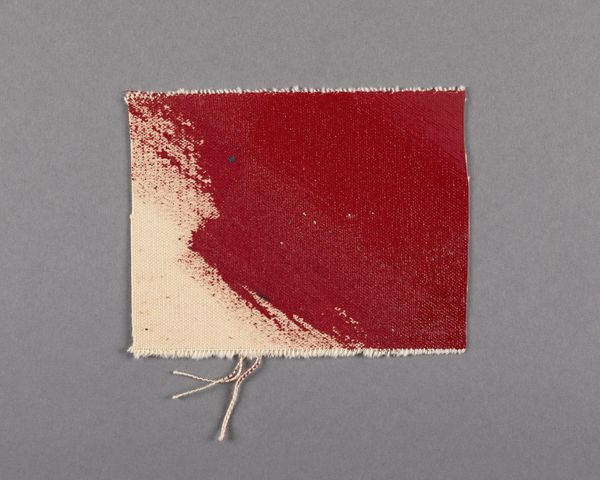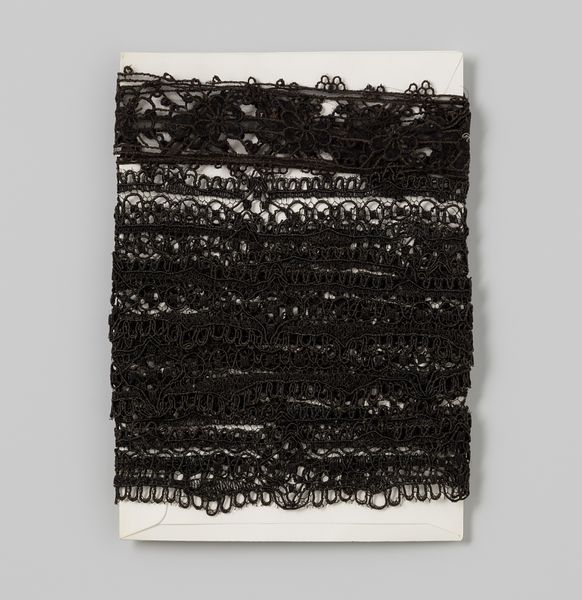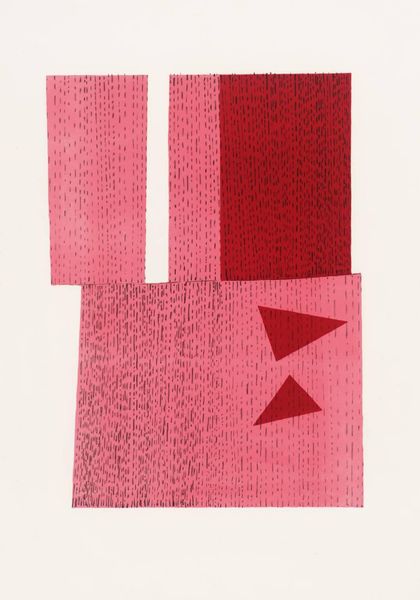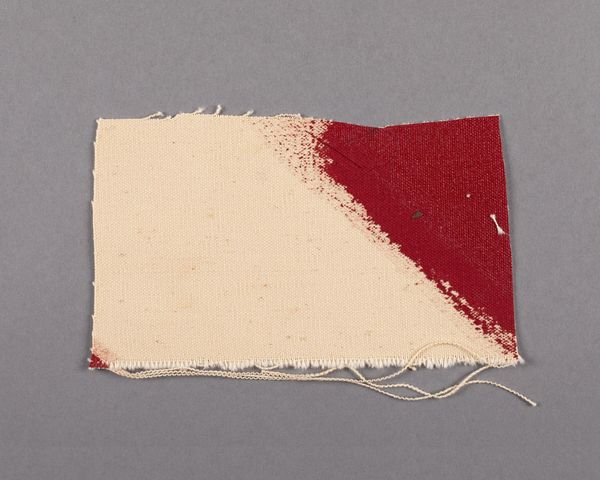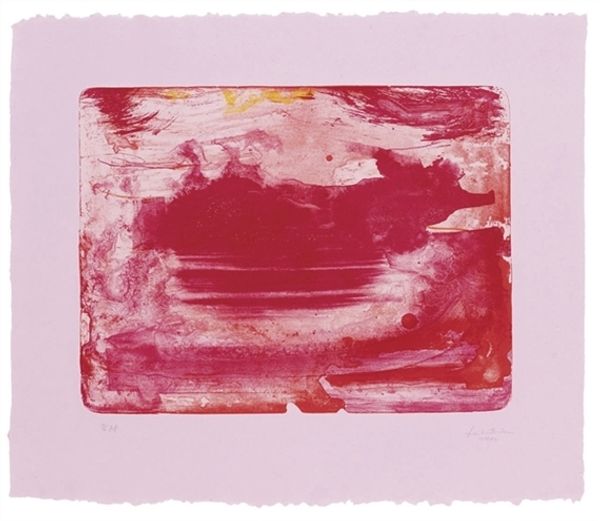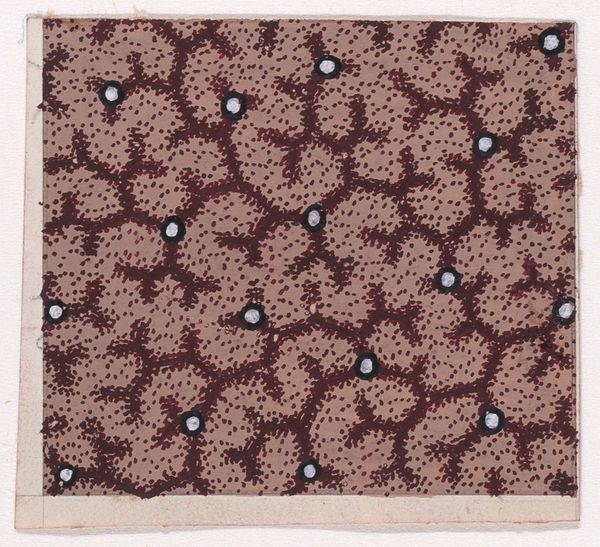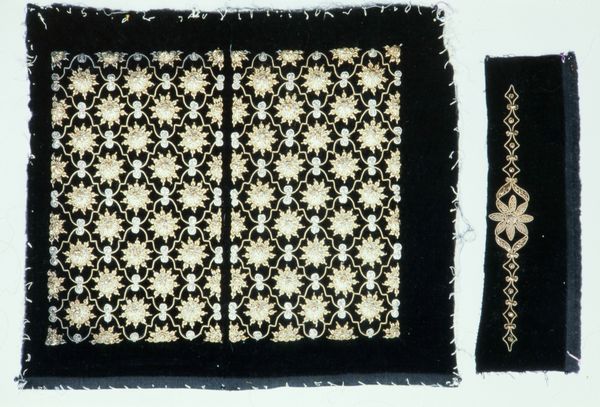
fibre-art, textile
#
african-art
#
fibre-art
#
textile
#
costume
#
abstract art
#
yoruba-art
Copyright: Public Domain
Curator: This intriguing textile piece is titled "Shango Priest's Costume" and dates back to around the 20th century. It's from the Yoruba people, currently held in the collection of the Minneapolis Institute of Art. Editor: It looks heavy! In the visual sense, I mean. All those layers and textures in a dark maroon hue… it conveys a real sense of gravity and presence. What do you notice? Curator: Well, immediately my eyes are drawn to the abundance of cowrie shells. Throughout many cultures, including Yoruba, cowries serve as potent symbols—they are, after all, tangible, ancient currencies that also embody notions of fertility, womanhood, and prosperity. Editor: Absolutely. Currency representing spiritual wealth, perhaps? A priestly garment would be all about performative communication; it's fascinating how something worn so physically connects to abstract concepts like wealth, status, and power within Yoruba society. And Shango, the deity...god of thunder, fire...talk about powerful! Curator: Indeed! The symbolism feels very intentional here. The colors resonate as well, I think: The deep wine, burgundy even. It also reads as the shade of sacred camwood powders used in rituals—the whole garment may serve as a visual encoding. Editor: Camwood as a skin treatment to brighten and beautify and mark transition from one phase to the next--like preparing to commune with Shango in rituals! I wonder, who wove the fibers? What stories would they tell of what their craft meant within their own identities? Were the artisans recognized, their work respected? Curator: Those are great questions to consider. While information on the creators can be obscured in traditional settings, this piece still resonates with a complex web of intentions. Consider the metal adornments as well-- bells or coins interspersed amongst the cowrie shells-- could these augment sensory perception and attract the divine force during ritual? Editor: I'm left pondering the sheer volume of lived experiences interwoven within the threads. Thinking of identity and what we chose to display and conceal, and for what reason, as it relates to spirituality, power and culture, all represented by this piece. Curator: And, of course, considering it today within a museum context is a great starting point, continuing a rich discourse that acknowledges past meanings while simultaneously generating new ones.
Comments
minneapolisinstituteofart almost 2 years ago
⋮
The Yoruba have numerous deities, called orisa. One of them is Sango, the god of thunder and lightning, also associated with social justice and spiritual well-being. Yet Sango has two sides, positive and negative: the rainfall that nourishes the earth is frequently accompanied by destructive storms. The Yoruba concept of life is indeed one of a dynamic balance between opposite forces. Most orisa have specific followers, led by a priest. Sango priests go into a trance when possessed by the thunder god, resulting in energetic dancing to the beat of drums. The countless shells and bells on this purple dyed costume would have added to the sensorial intensity of the performance.
Join the conversation
Join millions of artists and users on Artera today and experience the ultimate creative platform.
